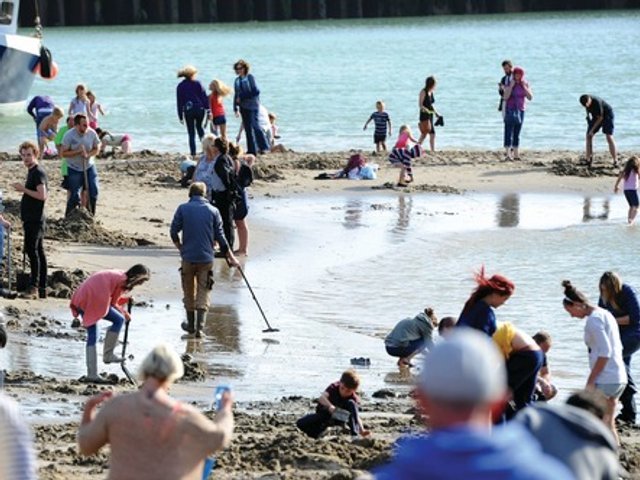The UK artist Bob and Roberta Smith is offering the residents of Folkestone, a UK seaside town on the Kent coast, an art school education as part of the next Folkestone Triennial, which opens this autumn (2 September-5 November). The fourth edition will include site-specific, public art commissions by 20 international artists including Lubaina Himid, Michael Craig-Martin, Amalia Pica, David Shrigley and Antony Gormley.
Bob and Roberta Smith has recorded a series of 12 pedagogical videos that will be released on the triennial website up until the opening. The London-based artist will also teach 12 individuals culminating in a show at the end of the triennial. “We’ll also develop a faculty for artists in the area. It’s about linking up all of the relevant parties,” he tells The Art Newspaper. Banners declaring “Folkestone is an art school” will be displayed around the town.
Lewis Biggs, the curator of the Folkestone Triennial, has called the exhibition Double Edge, referring to the two geographical axes of the town: the seashore and the Pent Stream, an ancient watercourse flowing from the Northern Downs into the sea.
The title also reflects current economic and political concerns. “It is about anxiety, the edge of the world, the edge of the future and the unknown,” he says. “Folkestone voted by a large majority to leave the European Union [in last June’s referendum]. Coming to terms with the double-edged nature of that vote is interesting.”
Lubaina Himid will create a vibrant Jelly Mould Pavilion for the sea front that, says Biggs, reflects “the way sugar has been the bloodstream of the British Empire”. Meanwhile, Richard Woods will install five houses at different city sites for his multi-part piece called Holiday Home, highlighting the housing crisis in the southeast of England. Amalia Pica will place “Modernist seashells” in local properties and around the town, while the London-based architecture practice Carmody Groarke will create a cave-like visitor centre on Tontine Street. Biggs says that around 10 works will remain in situ after the triennial ends.
The Folkestone Triennial is run by the Creative Foundation, a charity established by the local entrepreneur Roger De Haan in 2002. Funders of the Folkestone Triennial include Arts Council England, Kent County Council and the Roger De Haan Charitable Trust.




